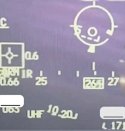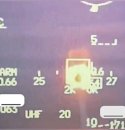For a regime, political objectives are based on 1. its own strength (external pressure) and 2. the vested interests of interest groups (internal pressure).
I personally believe that from the mid-2010s to the present, the United States' grand strategy has been to maintain and moderately retract its sphere of influence and world order, in exchange for enhancing its hard power and suppressing China's development. Through this grand strategy, it aims to achieve its political objective, which is to maintain superpower status and the world order most favorable to itself.
Meanwhile, China's grand strategy has been to gradually expand its sphere of influence and reform the world order. Through this grand strategy, it aims to achieve its political objective, which is the faster and higher-ceilinged development of its own comprehensive national power and the enhancement of its position within the world order.
For example, imagine the world as many basketball courts, nations as players, each with different physical abilities and scoring records. The order is the rules of the game, formulated by all players, but players with better scoring records have a greater ability to shape and influence the rules. Different courts have different rules of the game, and every player hopes the rules are as advantageous as possible to themselves, while also having as many courts as possible adopt the rules most beneficial to them. The world order, namely free trade and globalization, is like the rules of the court. It's not a single set of rules, but a term referring to a collection of fragmented, discontinuous rules.
Overall, the stronger the comprehensive national power, the more a country can:
After the mid-2010s, what the US has tried to do is: abandon promoting its favorable rules in some less important courts, divert resources from its own club members to buy protein powder (i.e., enhance its own capabilities), and strengthen the adoption rate of its preferred rules in the Indo-Pacific court. And, it seeks to disrupt the Chinese player's daily training and the promotion of the Chinese Super League's rules as much as possible.
From the end of the Cold War to the mid-2010s, China primarily focused on honing its own skills. Around the mid-2010s and beyond, China realized its skill level had become exceptionally high. Consequently, it naturally hopes that the rules of the game will better suit its techniques and style, and that the courts around it will adopt rules more favorable to itself. Only in this way can it maximize its own benefits and further improve its skills.
- If strength is insufficient and political objectives are set too high, even with excellent grand strategy and strategy, the goals may remain unattainable and lead to impaired interests.
If strength is excessive but political objectives are set too low, then the country will fail to gain potential benefits and easily lose internal support. Present conservatism will also increase the burden on future decision-makers. Interests are still impaired. - The vested interests of interest groups refer to the existing interests of the powerful interest groups within a country. Sometimes, even within a new interest paradigm and framework where the country as a whole could gain more benefits, this does not align with the rulers' interests. Therefore, they will still set a less-than-wise political objective.
I personally believe that from the mid-2010s to the present, the United States' grand strategy has been to maintain and moderately retract its sphere of influence and world order, in exchange for enhancing its hard power and suppressing China's development. Through this grand strategy, it aims to achieve its political objective, which is to maintain superpower status and the world order most favorable to itself.
Meanwhile, China's grand strategy has been to gradually expand its sphere of influence and reform the world order. Through this grand strategy, it aims to achieve its political objective, which is the faster and higher-ceilinged development of its own comprehensive national power and the enhancement of its position within the world order.
For example, imagine the world as many basketball courts, nations as players, each with different physical abilities and scoring records. The order is the rules of the game, formulated by all players, but players with better scoring records have a greater ability to shape and influence the rules. Different courts have different rules of the game, and every player hopes the rules are as advantageous as possible to themselves, while also having as many courts as possible adopt the rules most beneficial to them. The world order, namely free trade and globalization, is like the rules of the court. It's not a single set of rules, but a term referring to a collection of fragmented, discontinuous rules.
Overall, the stronger the comprehensive national power, the more a country can:
- Make the order it operates within more favorable to itself.
- Maximize the reach of the order most beneficial to itself.
- Make the world order more advantageous to itself.
And achieving these three points allows a country to gain more benefits and enhance its comprehensive national power.
After the mid-2010s, what the US has tried to do is: abandon promoting its favorable rules in some less important courts, divert resources from its own club members to buy protein powder (i.e., enhance its own capabilities), and strengthen the adoption rate of its preferred rules in the Indo-Pacific court. And, it seeks to disrupt the Chinese player's daily training and the promotion of the Chinese Super League's rules as much as possible.
From the end of the Cold War to the mid-2010s, China primarily focused on honing its own skills. Around the mid-2010s and beyond, China realized its skill level had become exceptionally high. Consequently, it naturally hopes that the rules of the game will better suit its techniques and style, and that the courts around it will adopt rules more favorable to itself. Only in this way can it maximize its own benefits and further improve its skills.


